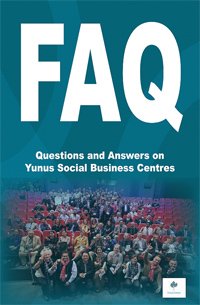Grameen Bank's Struggling (Beggar) Members Programme
July, 2005
Grameen Bank was started in 1976 by Muhammad Yunus as an experimental project to combat rural poverty by providing credit to the very poor in 1983 Grameen Bank became established as a formal bank which provides small, collateral-free credit to rural poor rural people mainly women, for income-generating activities. As of July, 2005, Grameen Bank disbursed $5.0 billion in loans to 5.0 million borrowers, 96 per cent of them women, with a repayment rate of 99%. It June 2005 it lent out about $ 2.5 million-a-day (working day) in tiny loans averaging around $130.
In late 2003, Grameen Bank embarked on a new program, exclusively targeted for the beggars in Bangladesh. Begging is chosen by many poor people in Bangladesh, as a result of river erosion, divorce, death of earning member in the family, unemployment or disability, and for many becomes a lifetime occupation. Beggars in Bangladesh are not reached by most of the poverty alleviation interventions and subsist on the margins of society. The Struggling (Beggar) Members Program is a new initiative taken by Grameen Bank to confront a sustained campaign that microcredit cannot be used by the people belonging to the lowest rung of poverty, as well as to reinforce the Bank's campaign that credit should be accepted as a human right.
Promeela Rani returns home after a busy day selling her wares Â

The key features of this program are unique and bypass the rules and regulations that apply to the regular Grameen Bank members. The struggling members are not required to form any microcredit group. While they may be affiliated with a regular group, they are not obliged to attend the weekly meetings. The regular group members act as mentors to the struggling members, providing guidance and support to them. The bank treats its struggling members with the same respect and attention as regular members and refrains from using the term "beggar" which is socially demeaning.
A typical loan to a beggar member amounts to Tk. 500 (US$ 9.00). It is collateral-free and there is no interest charged on it. The repayment schedule is flexible, decided by the struggling member herself. The instalments are to be paid according to her convenience and earning capability, and must not be paid from money earned from begging.
The goal of the program is not only to economically empower but also to boost the morale and dignity of the beggars. They are given identity badges with the bank's logo as physical evidence of the bank's support behind them. For some of them Grameen Bank makes arrangements with local shops to give the members a credit line upto a given amount to pick-up whatever items they choose to take out to sell in the village. The bank provides guarantee to the shops that it will make payments in case of defaults. The struggling members sell items such as bread, candy, pickles, toys, and so on to supplement their begging.
Mokhlesur receives items for sale on credit from a local store
 The struggling members are welcome tosave with Grameen Bank as they wish. They are covered by the loan insurance scheme under which their loans will be fully repaid by Grameen Bank in case of death. In addition, Tk. 500 will be provided from the bank's Emergency Fund to the bereaved family for meeting burial expenses.
The struggling members are welcome tosave with Grameen Bank as they wish. They are covered by the loan insurance scheme under which their loans will be fully repaid by Grameen Bank in case of death. In addition, Tk. 500 will be provided from the bank's Emergency Fund to the bereaved family for meeting burial expenses.
The bank provides struggling members with blankets, woolen shawls, mosquito nets and umbrellas on credit to be repaid as interest free loans. Although there is no compulsion for the struggling members to give up begging, there are many cases of beggars who have given upbegging and moved on to being business persons.
As of July, 2005, Tk. 31.11 million has been disbursed to 47,454 struggling members, of which Tk. 15.40 million has been repaid. 786 members have already quit begging. Grameen Bank expects the number of struggling members taking part in this program to exceed 50,000 by the end of 2005.


